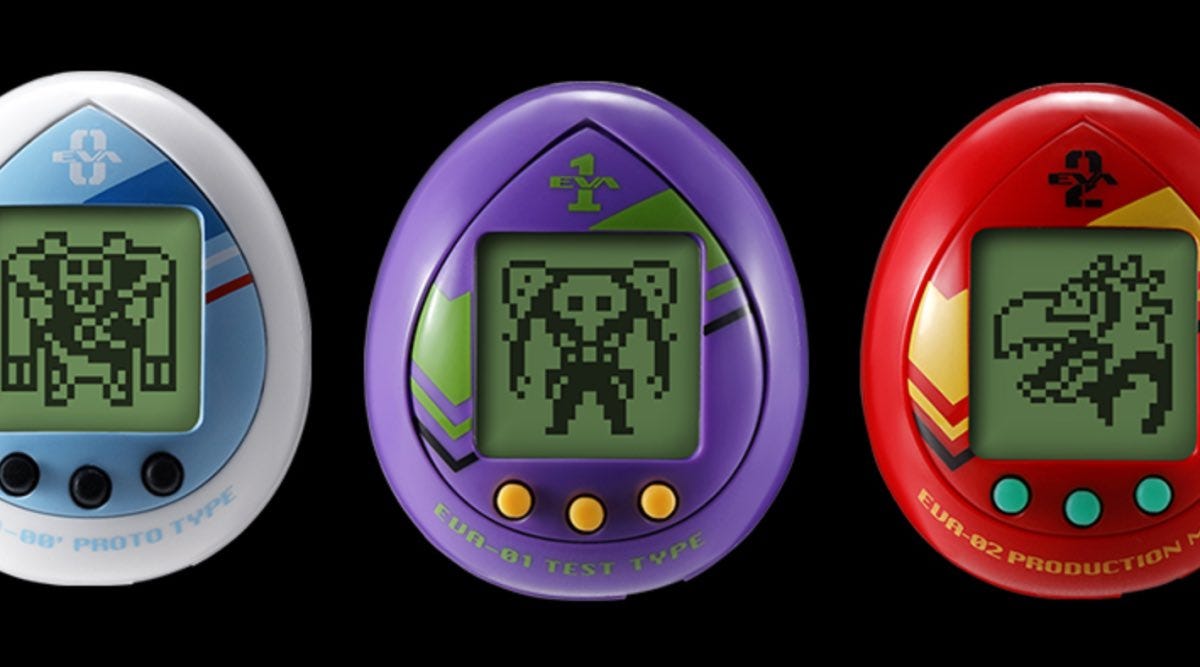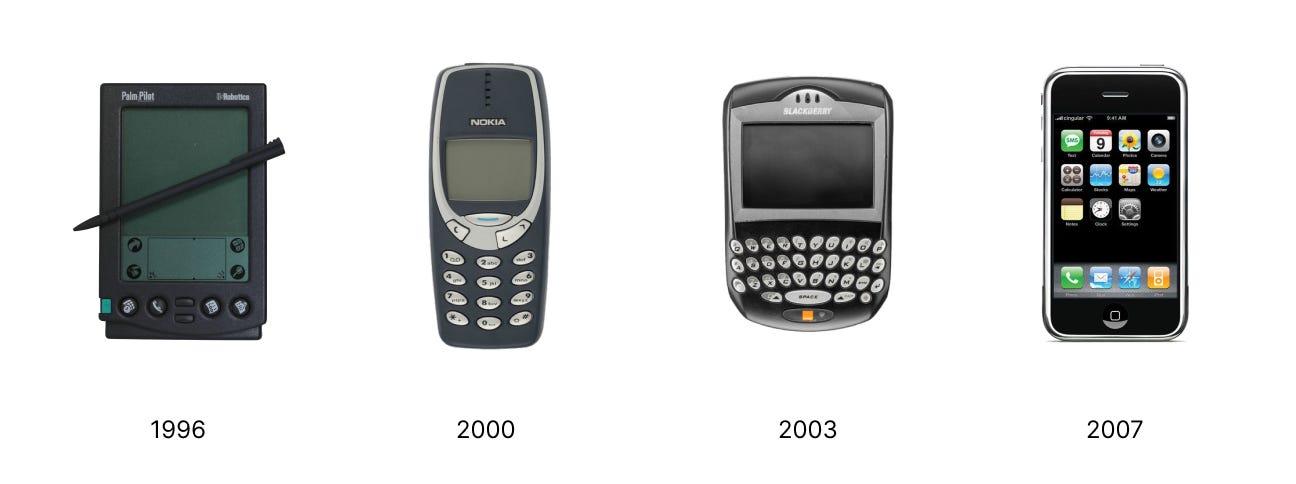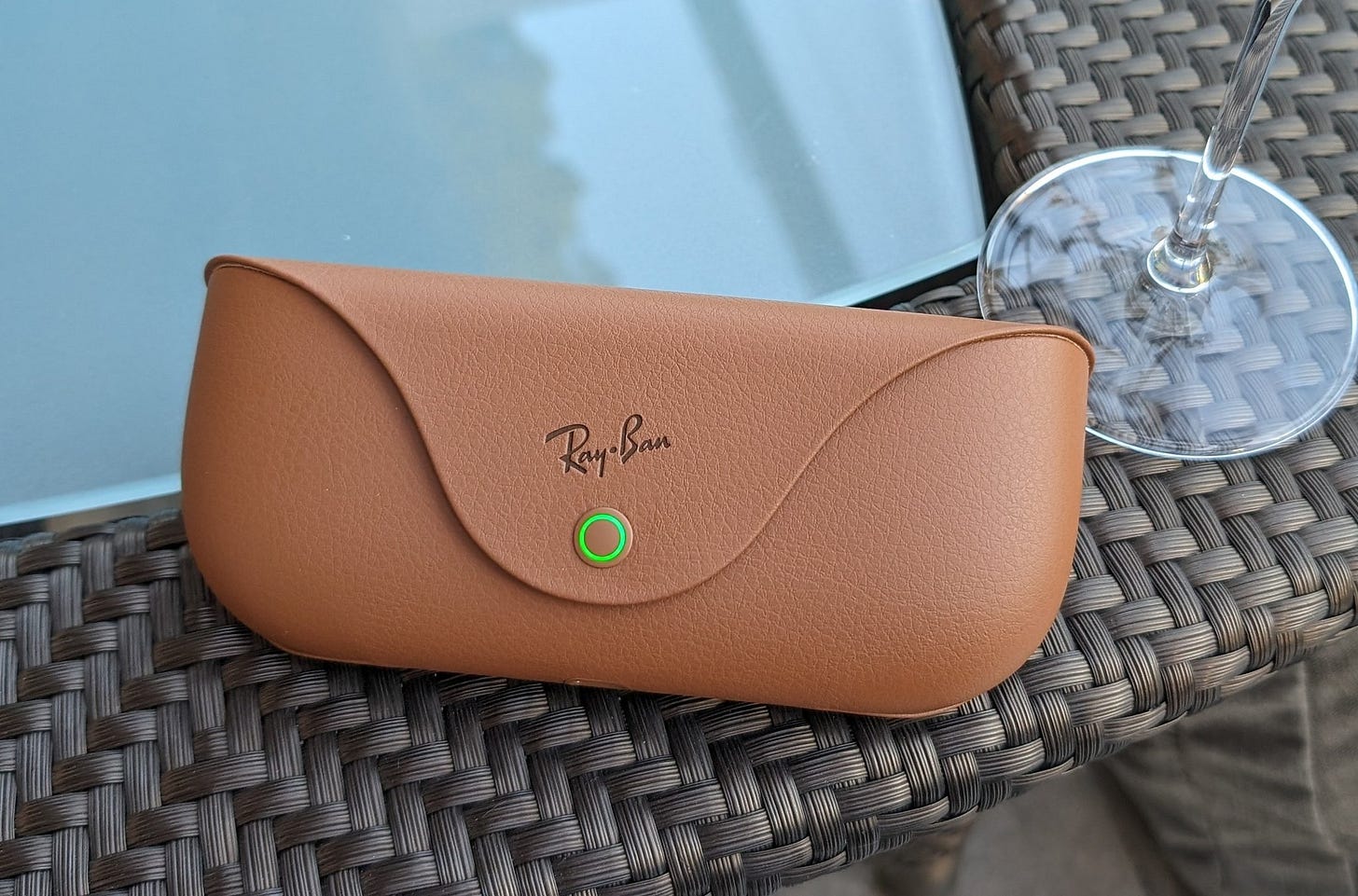What’s the future of AI hardware?
I don't have answers
Before I begin: I’m starting an experiment: my calendar is now open for remote coffee sessions. These are casual, no-agenda meetings. Just a thirty-minute conversation about anything you like. Maybe you’re considering starting a similar writing practice or seeking a design thought partner. Jump to Calendly to get more ideas.
Since the AI mania erupted, I haven’t made up my mind about the century's hottest topic. I’ve been experimenting with building “AI-inside” products1 for a year now, but I’ve cautiously tried not to form a strong opinion about it.
As a software native, the recent AI hardware discourse oddly seemed like a good starting point to get my head out of it. I even went to watch MKBHD’s reviews for the first time fully.
But just as I started to think I was getting somewhere, my mind flipped.
While many seek to discover a true purpose for AI in the hardware space, I’d like to take a step back and prompt a broader discussion. What’s the case for hardware these days anyway? I find it useful to observe the wide range of the spectrum beyond the artificial lens. AI may be the new frontier, but it faces a long road ahead.
What are we doing here?
But first, how did we get here?
Numerous AI-integrated hardware and gadgets2 have been announced this year, but the Ai Pin and the rabbit r1 have undoubtedly made the news.
It was hard to ignore the hype around the Humane company over the last couple of years. Founded by ex-Apple veterans, the mysterious company attracted top tech talent and hundreds of millions in funding, generating tremendous hype.
In Humane’s shadow, another company called rabbit emerged, which apparently started in the crypto space. As befitting a company that partnered with Teenage Engineering, the orange-lower-case brand launched the r1, a Gameboy-like device. And much like the Ai Pin, the r1 is supposed to serve as a personal assistant.
Leveraging the AI tailwind, the two set high expectations.
Humane’s co-founder appeared in an eloquent TED talk, following a long marketing campaign which for a moment seemed like it was really about to "change everything". The rabbit debuted at CES 2024, showing off the r1's seemingly remarkable capabilities. And when it went on sale, it was sold out in 24 hours.
Yet, the backlash both companies faced was unsurprising. Meeting high expectations is never easy.
By giving whiz-bang demonstrations, the AI hardware devices create expectations, and that leads to ultimate disappointment.
So… what are we doing here?
This is a point MKBHD is trying to make in his r1 review. In an attempt to make sense of the seemingly mediocre device, the OG tech reviewer describes how the "fake it till you make it" culture dominates many industries. From gaming to software, and cars, the norm is to release products in half-baked mode.
Commonly in marketing landing pages, you’d often see a lavish screenshot representing an utopic version of the company’s product. A set of futuristic features that are unlikely to materialize in the short term, but it creates the desired hype.
As a coda, Marques asserts that new AI hardware will worsen before it improves.
To be honest, I'm pretty neutral over this prediction—AI hardware isn’t on my wishlist. However, this made me ponder how might we evaluate hardware nowadays. In my view, there are three main segments:
Reinventing: creating new paradigms through new forms, while replacing existing models of thinking and doing.
e.g. TV, Smartphones, Laptops, GPS
Improving: repackaging or wrapping a known experience into a familiar form.
e.g. Smart Watch, Bluetooth earphones, Smart Home Devices, E-readers
Entertaining: creating new forms of experiences purposely to entertain, often while creating a new culture.
e.g. Tamagotchi, Game Boy, VR headsets
I would say the Ai Pin and r1 are a bit of everything. While the latter leans towards reinventing, the former is more entertaining. Maybe this claim can be used to explain the long way Humane has gone until launching an actual product. On the contrary, the rabbit chose a faster approach to deliver a product, by outsourcing the industrial design of its r1.
Delving deeper, it seems the Ai Pin aspires to achieve many things. Its laser projection, familiar mainly to fighter pilots using HUD systems, introduces a new concept for consumers. It aims to reduce smartphone usage, suggest a new type of wearable device, and seek to become a better AI-powered voice assistant. These features might all make sense, but perhaps it's all too ambitious.
Observing my rough Venn sketch, I fear the main issue with those new artifacts is that neither fit into a specific segment. As mentioned above, they are all just a bit of everything, which makes me think:
How might AI hardware be fashionable yet useful?
Is AI the true enabler of a new hardware era?
Naturally, we have more questions than answers at this point. Although it seems we’re in the rising moment of “hardware wrappers”, taking a step away from the raging scene opens the hatch for some more sensible artifacts. To keep things in context, the following will be explored through my Venn circles:
Let me entertain you
From the pre-electronic era of playing cards to Atari’s post-mortem of Gameboy and gaming consoles, consumers have been sought for entertainment.
In 2022, a modern look-alike Gameboy called Playdate was released by the company Panic. If the little yellow artifact design looks familiar to you, then you guessed it right—it’s another Teenage Engineering work. Similarly to its nostalgic inspirator, the Playdate is a tiny gaming console that offers a range of custom-made games and doesn’t provide any other features. The Playdate’s goal is to entertain customers with cool and (even hand-made3) appealing games. To add to its playfulness, the Playdate is designed with a crank to control the device, which resembles the iPod slider's novelty.
Another project that recently caught my eye is the USB club.
The USB was a breakthrough in computer data transfer, but today it’s the cloud storage that rules. The club project isn’t about inventing a new type of flash drive. Instead, it repurposes the USB core idea and turns it into a vehicle for a file exchange bazaar, or as its website says, “a social file exchange”. A virtual-physical network of people carrying files on small USBs, and sharing them with others.
In more topical news, Spotify announced the sunsetting of the Car Thing. The $100 artifact is about to become an acorn, which seemed to infuriate many of its owners.
I haven't had the chance to try it myself, but the “Thing” is basically a cool remote controller for the Spotify app. Indeed niche, and perhaps not the most purposeful, but fans seem to adore it. A simple device that makes listening to music enjoyable, whether on the road or at home.
Exhibit Tamagotchi
Like many others, I was reminded of the nostalgic Japanese toy after the comments on the Pin and r1 started flooding my feed. Back in the happy days when we were going outside, playing hide-and-seek, and riding metal scooters, we were also addicted to keeping our little digital weird creature alive.
If there was such a graph, I bet there was a time between the late '90s and early 2000s when toothpicks were used for reviving Tamagotchis of defeated children more than cleaning adult's mouths.
Despite being a passing fashion around the beginning of the millennium, the Tamagotchi really excelled at entertaining. There was no sophisticated tech inside the plastic artifact. No futuristic features. It was just a simple but delightful experience with a clear purpose: don’t let your digital pet die.
Waiting for something to become established and then working to improve it
Technology evolves in cycles. In the Maturity phase of the technology life cycle, new technologies are widely adopted, leading to increased competition. During this phase, established conventions allow builders to iterate and improve upon a set of artifacts.
Over the years, Apple has become the prime example of this improving philosophy. None of Apple's products in the last 20 years were pure inventions. The iPhone, AirPods, Vision Pro, and Watch weren’t the first of their kind to market. The iPhone came after years of trial and error by many other mobile phone manufacturers—a result of countless iterations and years in the making.
Yet sometimes it feels like things need to go back to basics. Reverse engineering culture to where it started. It seems when technology takes over, an urge to go backward appears.
An old-new trend that might be emerging right now is the dumbification4 of our screens, or at least making more sense of them.
Take the Light Phone for example. The dumb phones trend might be making a comeback, but the realization that led to the Light Phone occurred somewhere in 2014, ironically in a Google incubator that sought to find ideas for new apps.
The $300 “dumb phone” wasn’t set to improve the smartphone as a form factor. Moreover, it didn’t follow the expected linear advancement path of introducing new features or improving performance. It rather aims to improve a perception—by reducing screen time, instead of increasing it. It’s an intentionally closed garden.
In a natural transition, the space of tablets is now in the news.
First, there’s reMarkable, which is like a digital notebook, designed for writing and reading. Like the Light Phone, it uses an e-ink screen, and there’s no app store available. The opinionated device is powered by a custom Linux version and seeks to help people work without distractions.
But the Norwegian-based device might be old news already, with the launch of the Daylight DC-1. The new device is a breeding-like tablet of an iPad, Kindle, and reMarkable. Unlike the latter, it allows installing external apps while maintaining the e-ink feel with its Live Paper mechanism.
Modern reinventions
What does it mean to invent in a hyper-technological era, when it feels everything has been already created?
It’s hard to reinvent the wheel once it’s invented. But perhaps a modern interpretation of reinventing doesn’t have to be so literal. We’re past the Industrial Revolution and advanced technological leaps. Inventing new forms of mobility might not be necessary, and flying cars aren't on the horizon.
One noteworthy artifact in this context is the Raspberry Pi. There’s probably no need to introduce the Pi. The beloved device has become a unique device of its own—a customizable computer, serving pretty much any purpose, from education to entertainment. The Pi may not invented a new technology but it did transform many industries. It popularized new methods for student learning and teaching and significantly impacted the open-source community. In a way, the Pi reinvented some existing paradigms.
Back to Artificialand
Coming back to AI land reveals a few interesting projects I haven’t seen much in the spotlight, spanning across multiple areas of my Venn.
The “tell what I’m looking at” feature is one of the first “AI features” integrated into new AI wearables with cameras, including the Ai Pin and r1. Perhaps due to the popularization of modern home assistants, this feature feels natural. Many AI hardware are leveraging this function, but its practical usefulness remains unclear. Like Siri on iOS, voice assistance in new hardware may serve as an alternative interface control rather than a transformative feature.
But perhaps what’s lacking is focus. An interesting projects that utilize a camera with AI technology is the ASH, an internal experiment from the lab of FINH:
An Ai-Pocket Field Guid For ecology guardians ages 6 and up. It's like a Pokedex, except its real.
The Pokemon-inspired device is imagined to assist kids in exploring nature. Similarly to the Ai Pin and r1, the ASH uses a camera as the user points the device to scan the surroundings. But instead of being an all-purpose Swiss-army-knife device, the ASH is envisioned to be designed for a single purpose.
The ASH might not see the light of day, but it demonstrates a good case for how hardware might make AI useful. It might have been an app, but by packaging a learning experience into a standalone artifact, the ASH could potentially enrich the process of studying and leveraging “AI wisdom” without tantrums.5
From a small London studio to a global tech giant, the Smart Glasses collaboration began in 2021, much to my surprise. I’d assume a gleaming announcement, but maybe it went only under my radar, from my hidden internet corner. Compared to its first generation, the glasses have exceeded expectations. I wouldn't expect anything other than "tech glasses" from tech and eyewear giants, yet what they came up with feels novel.
The duo didn’t reinvent glasses but rather added a techy layer to Ray-Ban's existing models. Looking at the design fashion in the Wearable AI parade gives me the impression that companies are inclined to reinvent an artifact's shape just because it suggests "new capabilities". But do we really need a new type of artifact to carry? The Smart Glasses might prove the opposite. Repackaged in a known form, it doesn’t require entirely new development, nor suggests an addition to our "everyday stack”, which already feels bloated.
The future remains to be unknown
As we continue to wander in this experimental phase, AI hardware will still be searching for an identity. What should they be served, besides riding the wave?
To this Malik’s prediction, I can relate:
AI will likely continue becoming a bigger part of tech gadgets’ marketing points, especially devices targeting those who are eager to own the latest and greatest but have varied understandings of what AI can do and its relevance for them.
There are times when AI can improve a gadget. But over the next months and years, I expect that more devices that aren’t necessarily better with AI integration will advertise questionable features related to the tech.
Hardware takes time to mature. It took a decade to get from the PalmPilot to the iPhone. In between we had Flip Phones, Blackberry phones, Nokia dumbphones, and many more. We might be in front of another decade before figuring out what AI hardware will become, if any.
I’m not sure AI is the true enabler for a new type of hardware. But maybe in the end it’ll become clear in which part of the Venn it belongs. If LLMs are currently best served as software, perhaps it’s just a layer many existing artifacts could integrate at some point. Maybe a future Pi model could include an AI layer, making working with LLMs fun and engaging, much like it does in other fields. Maybe the Smart Glasses is indeed a good idea for tech-savvy people.
Probably because I’m not the most tech-optimist, Wearable AI makes me cringe. Laser ink reflecting on my hand gives me cyborg connotations. And I can’t imagine myself talking to my dash, probably for the same reason I don’t understand TikToking in public. Even walking around outside and recording a voice note feels somewhat weird to me. But all of those experiments create a refreshing and innovative atmosphere. I claim inspiring and authentic design emerges from niches, and perhaps the evolving AI land will serve as a fertile niche ground until its full potential is realized.
Friend, Limitless, Smart Glasses, 01 Light — reply with your suggestions.
Playdate offers an SDK, allowing developers to create their own games.
More on ASH’s behind the scenes









